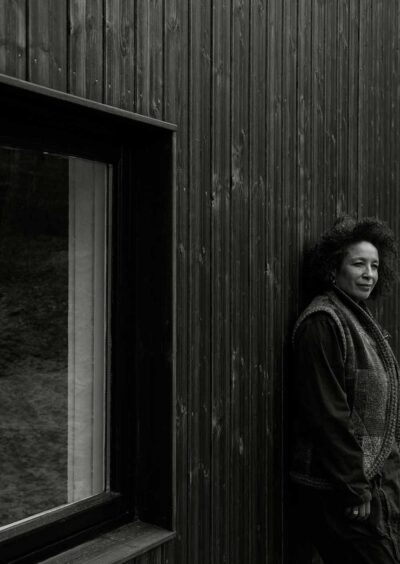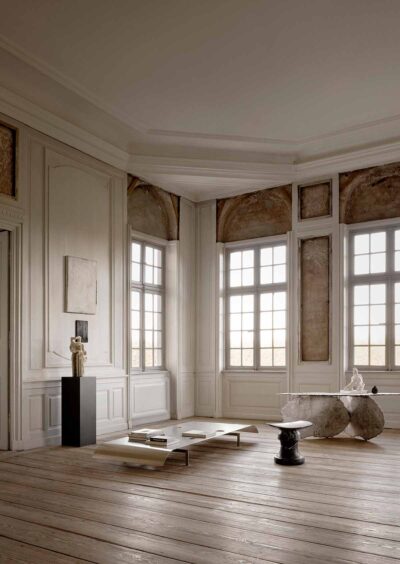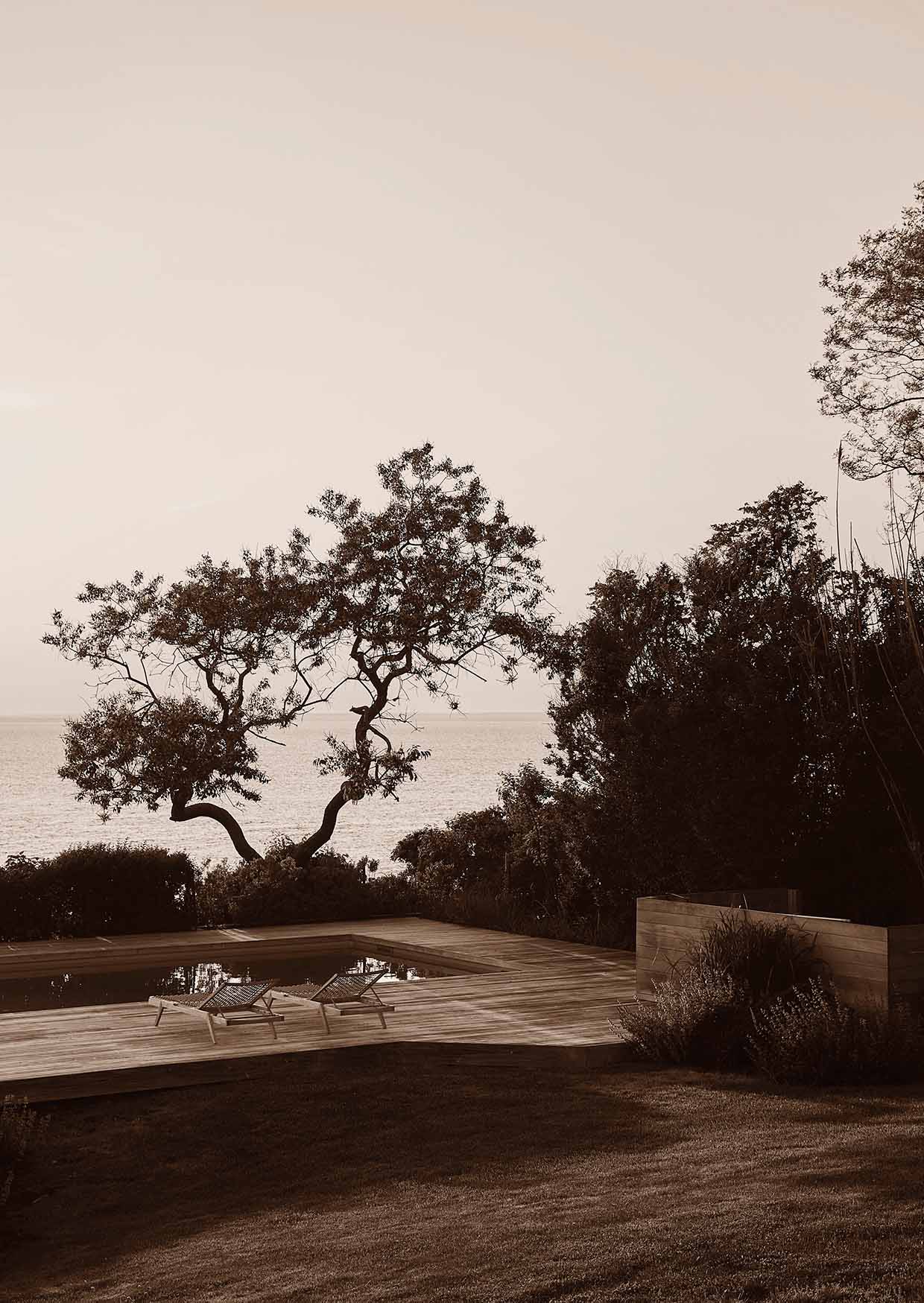
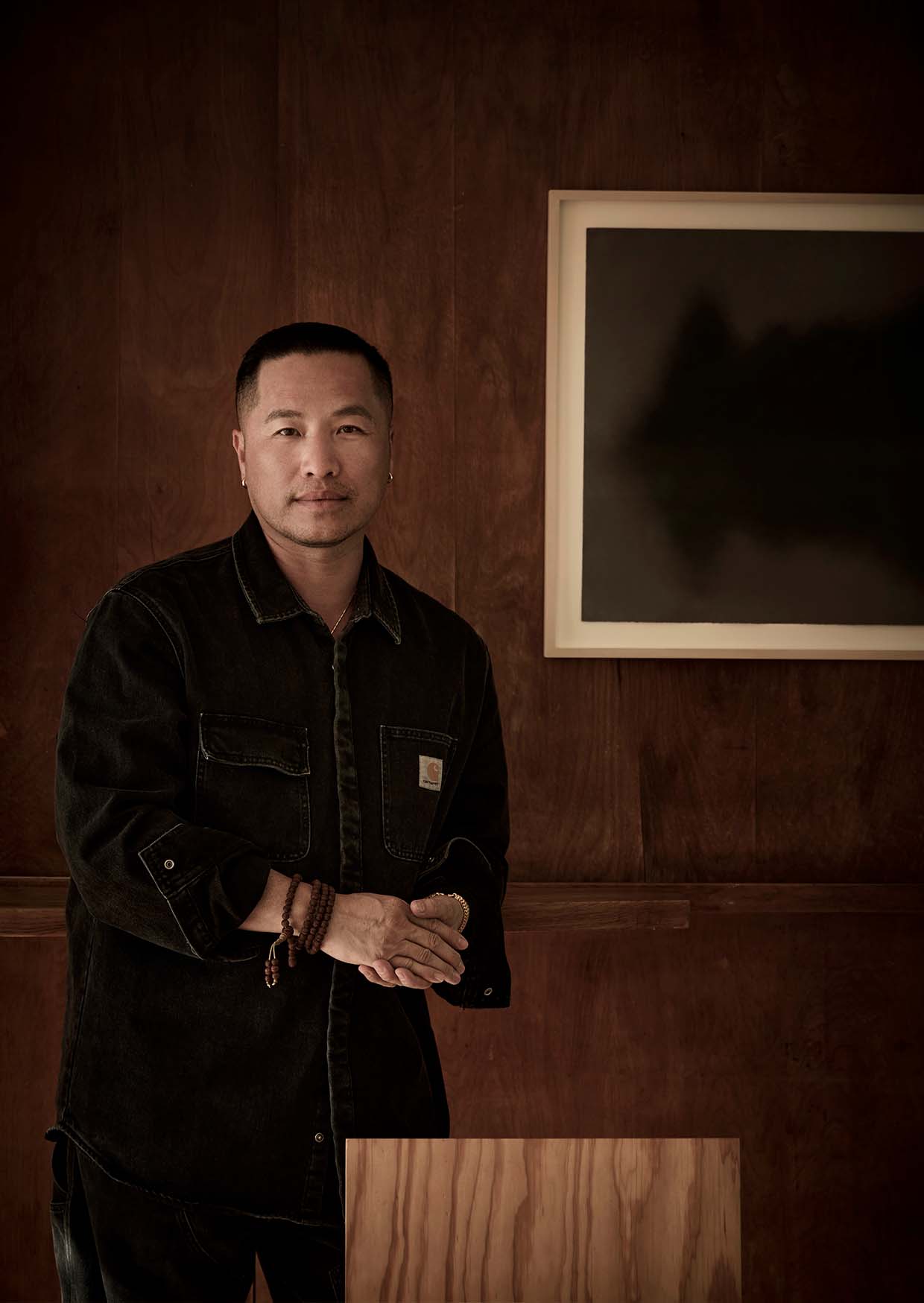
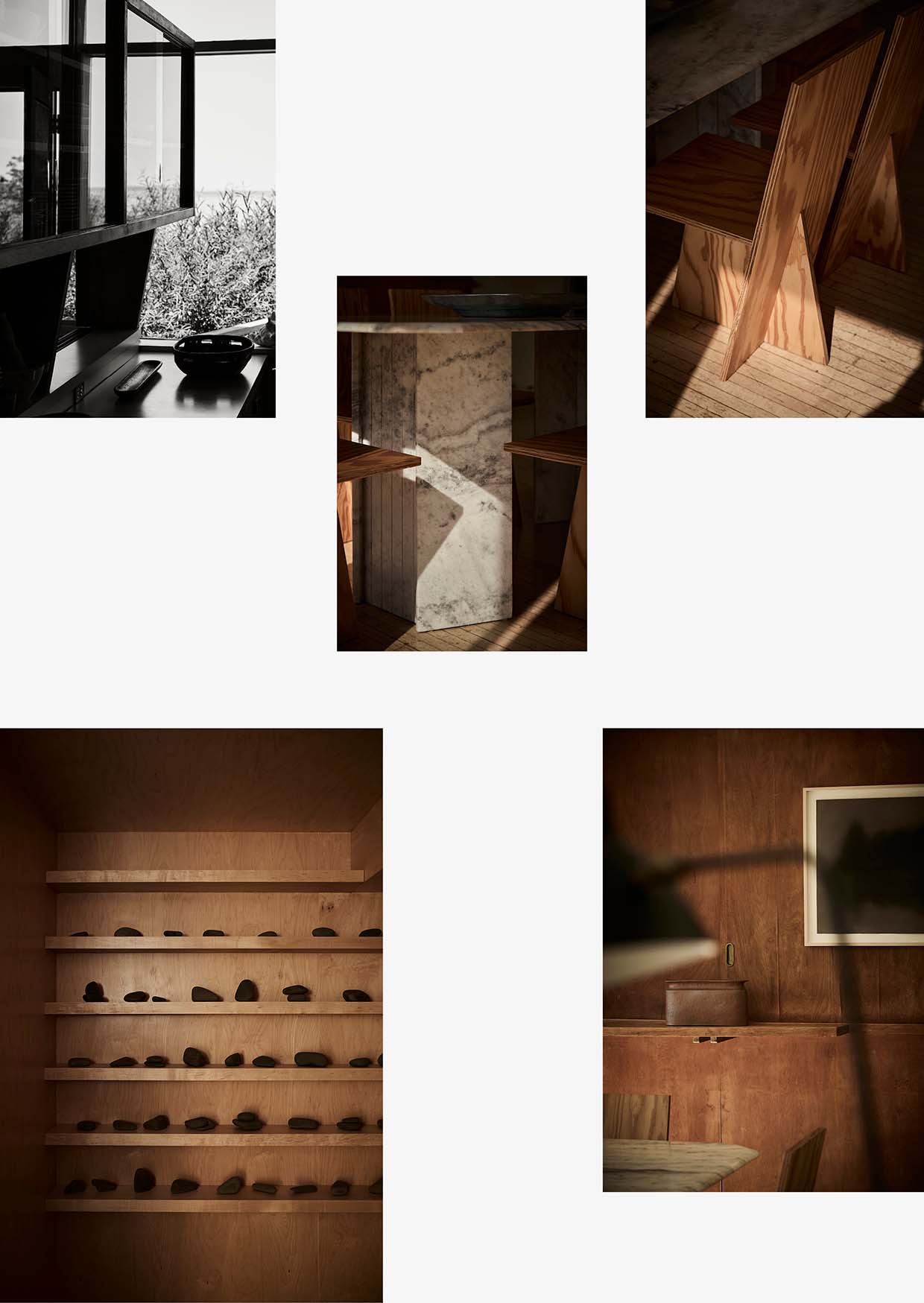
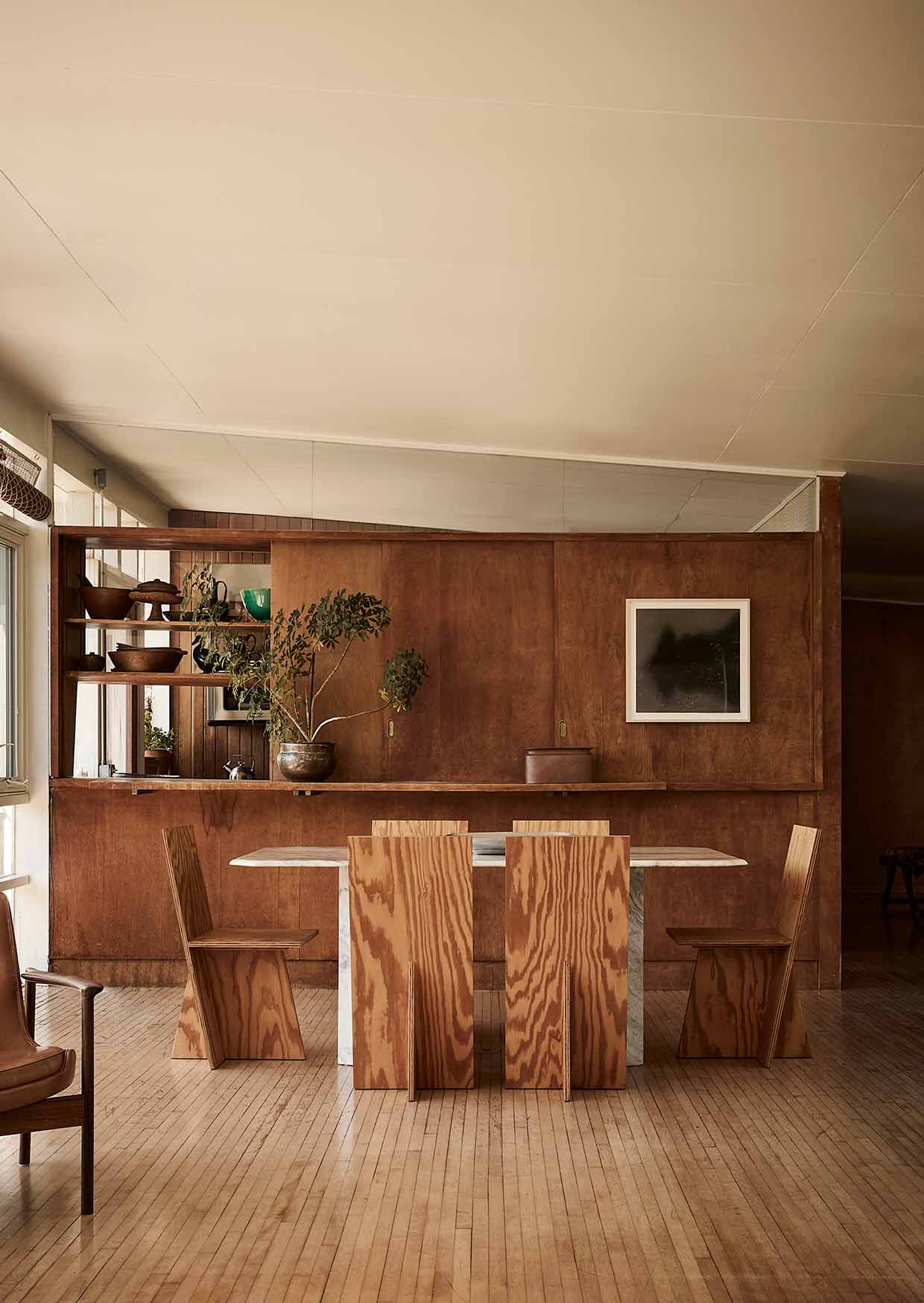
THE REAL PHILLIP LIM
Home
Phillip Lim has changed. The designer sees beauty in another way and his simple beachside shack on Long Island was a catalyst to a shift in perspective and priorities. The house might be a work in progress with elements from the 80s and 90s mixed with the original 40s architecture reminiscent of Marcel Breuer’s style. But as far as the designer turned rights activist is concerned, the beach retreat he calls Happy Place does not have to be perfect or even finished to be beautiful.
“I no longer want everything to be new and the best in class. I am trying to find the balance of when and where I should insert my hands and where I should just respect the natural course,” says Lim about the natural unfinished edges, timeworn pieces, doorknobs made of rocks from the beach, old possessions of timeless design with vintage and contemporary furniture used in a new way.
The ocean retreat is very different from his New York loft, which Lim speaks about as if it belonged to a different era. Before the pandemic he was content to be the Asian-American fashion designer the Phillip Lim brand. Now he is more fluid, creator and activist.
“I live a different way now. As soon as I open the door, I am immersed in nature and I feel so alive.”
Read more in Ark Journal VOLUME X.
WORDS KAARIN GRÅBÆK HELLEDIE
PHOTOGRAPHY WICHMANN + BENDTSEN
STYLING HELLE WALSTED
ZUCCHETTI AND FRIENDS
A custom-built showroom in Milan exhibits new design-driven Zucchetti collections like works of art.
JOURNEY’S END
A 90s portable church has found its home on a secluded hill in the forest, becoming a contemporary respite for creation and reflection for Josephine Akvama Hoffmeyer.
CASE STUDY
— DISSONANT BEAUTY
As in music, interior design calls on many elements – rhythm, contrast, repetition – to create that most subjective of visions: beauty.

THE REAL PHILLIP LIM
Home
Phillip Lim has changed. The designer sees beauty in another way and his simple beachside shack on Long Island was a catalyst to a shift in perspective and priorities. The house might be a work in progress with elements from the 80s and 90s mixed with the original 40s architecture reminiscent of Marcel Breuer’s style. But as far as the designer turned rights activist is concerned, the beach retreat he calls Happy Place does not have to be perfect or even finished to be beautiful.
“I no longer want everything to be new and the best in class. I am trying to find the balance of when and where I should insert my hands and where I should just respect the natural course,” says Lim about the natural unfinished edges, timeworn pieces, doorknobs made of rocks from the beach, old possessions of timeless design with vintage and contemporary furniture used in a new way.
The ocean retreat is very different from his New York loft, which Lim speaks about as if it belonged to a different era. Before the pandemic he was content to be the Asian-American fashion designer the Phillip Lim brand. Now he is more fluid, creator and activist.
“I live a different way now. As soon as I open the door, I am immersed in nature and I feel so alive.”
Read more in Ark Journal VOLUME X.
WORDS KAARIN GRÅBÆK HELLEDIE
PHOTOGRAPHY WICHMANN + BENDTSEN
STYLING HELLE WALSTED




